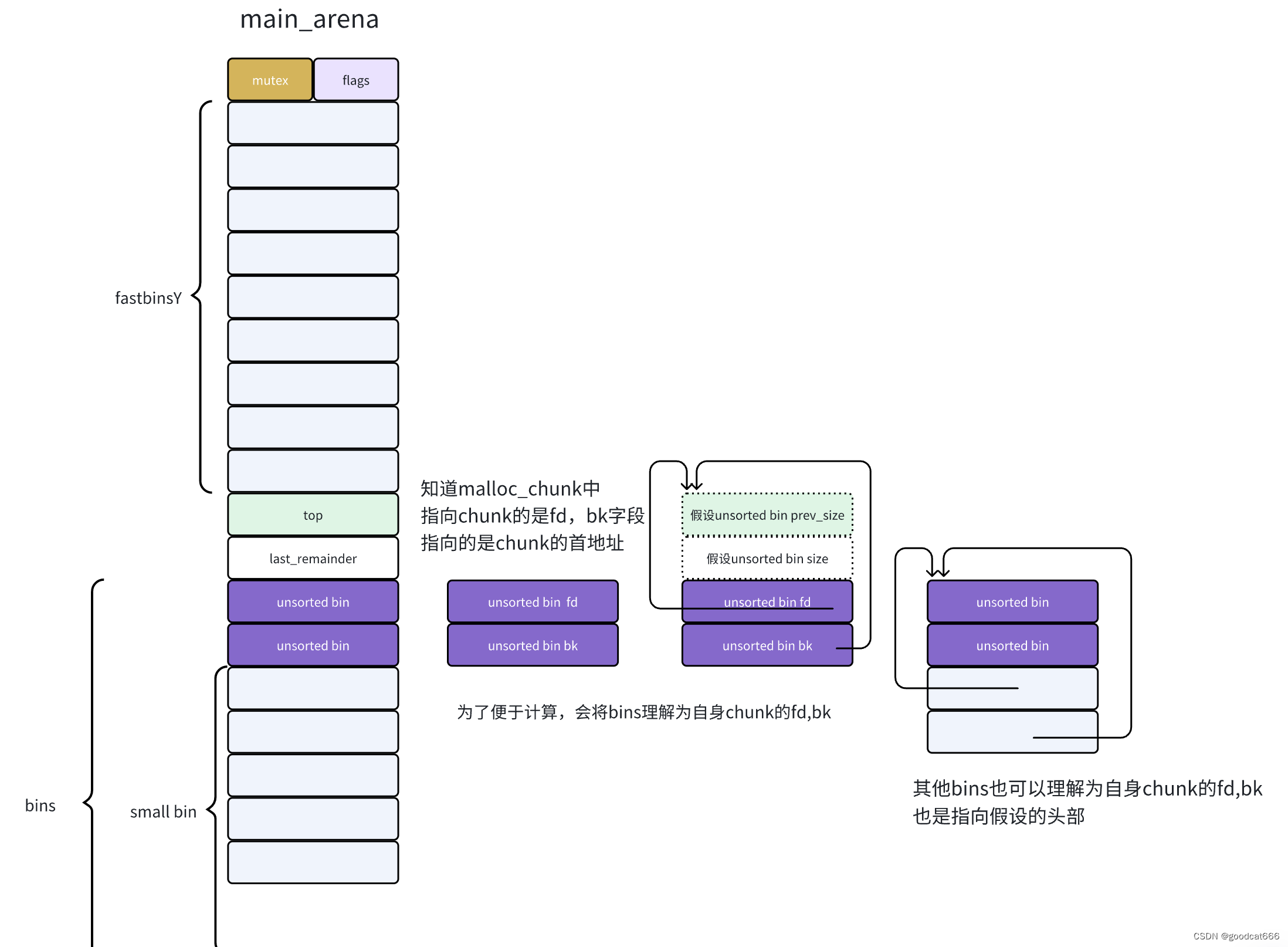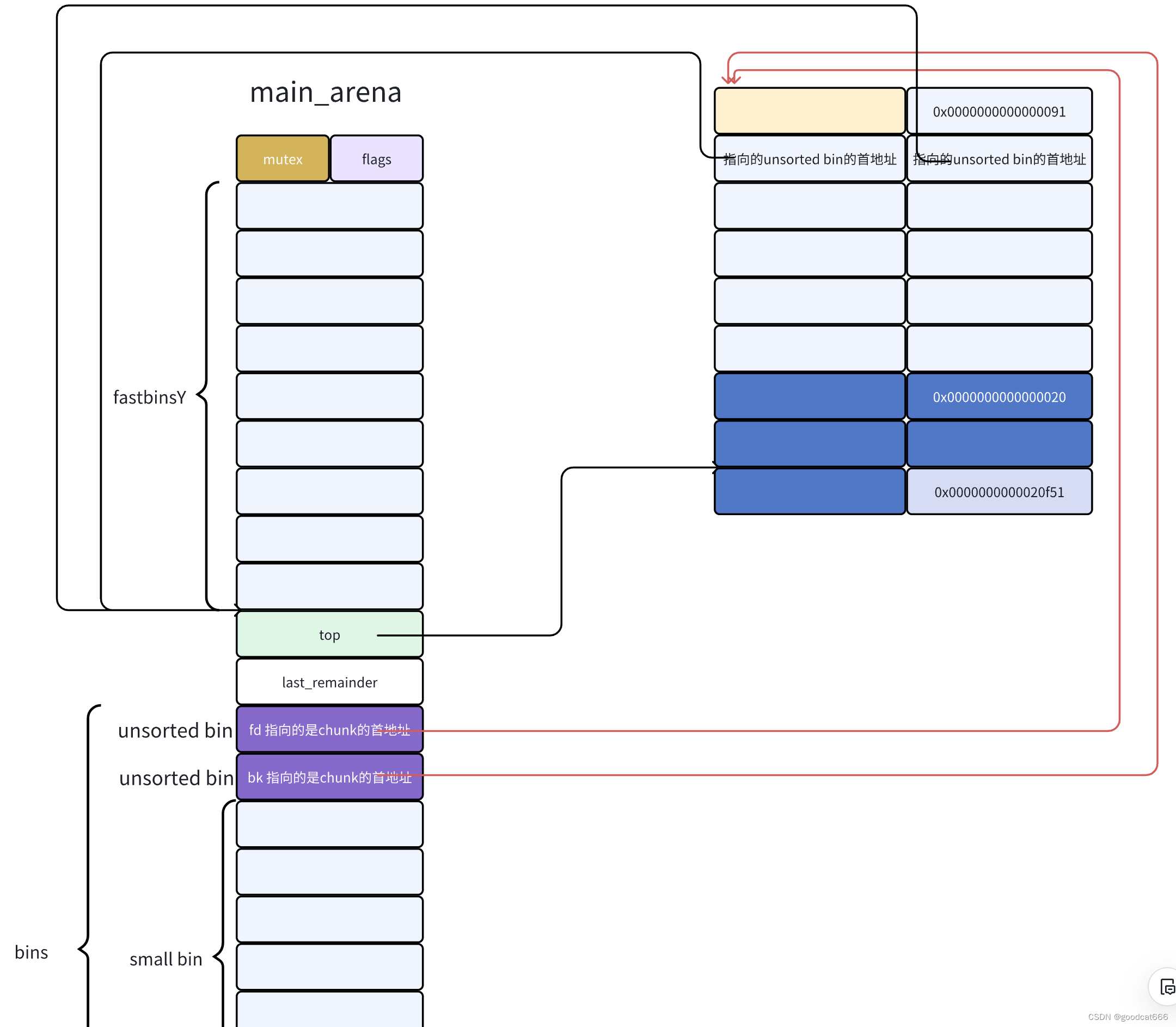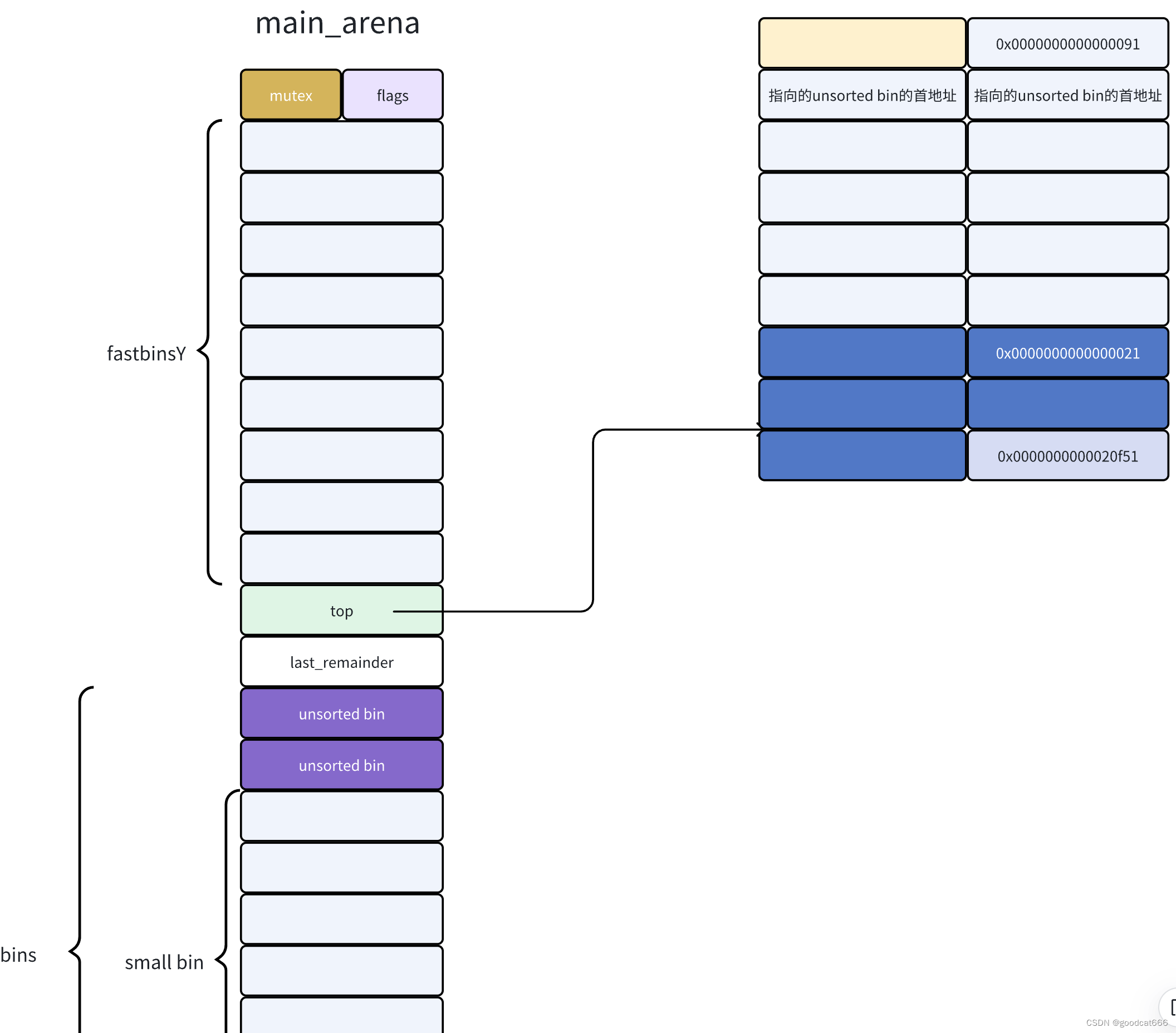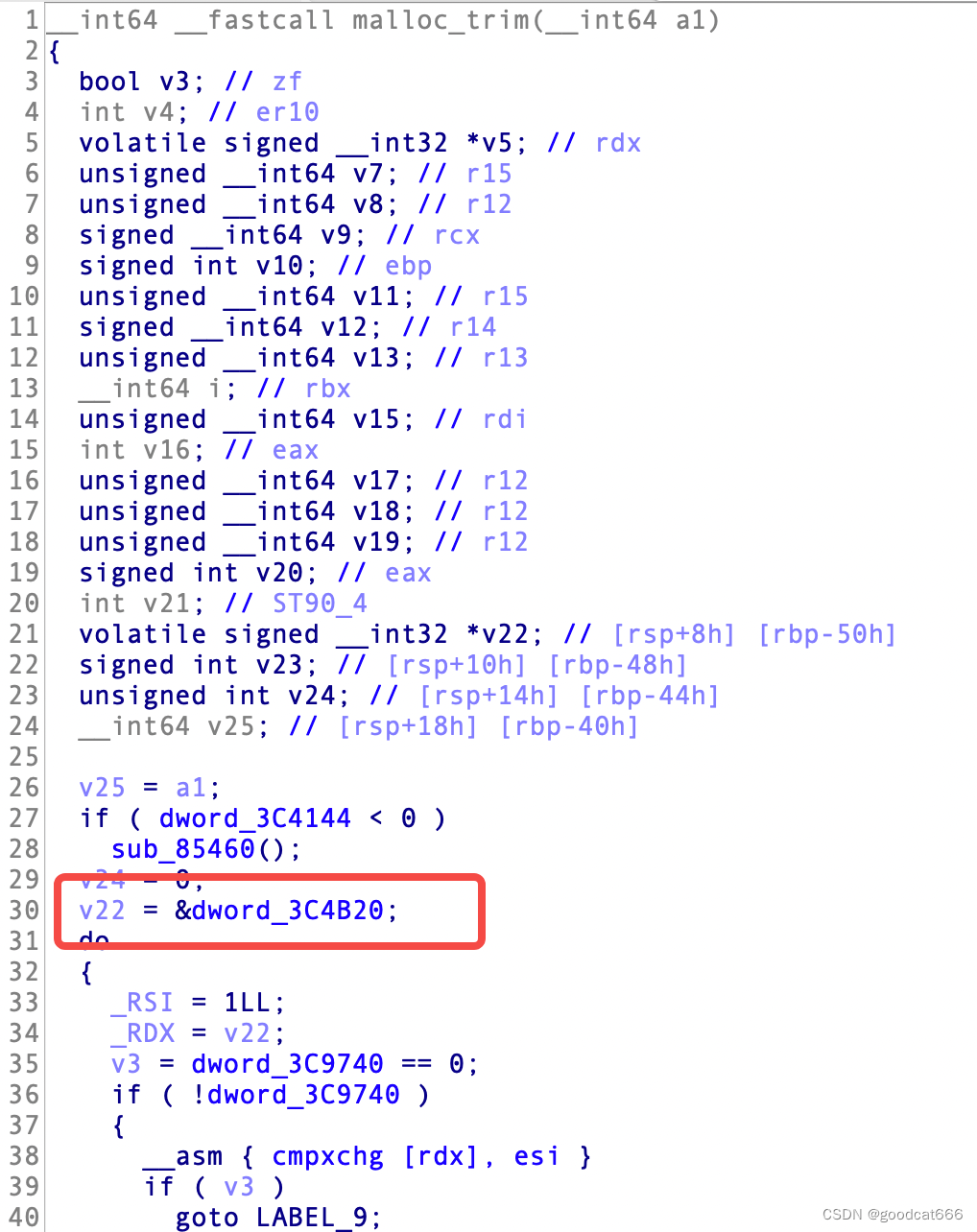how2heap-2.23-04-unsorted_bin_leak
发布时间:2024年01月04日
#include<stdio.h>
#include<malloc.h>
int main()
{
char* a = malloc(0x88);
char* b = malloc(0x8);
free(a);
long* c = malloc(0x88);
printf("%lx , %lx\n",c[0],c[1]);
return 0;
}
unsorted bin leak原理:将chunk从unsorted bin申请回来时,chunk中保存的与unsorted bin相关的地址没有被清除,可以通过该地址获取libc的基地址
main_arean->bins初始化数据的含义
之前的文章过,画了个图介绍过,how2heap-2.23-03-fastbin_dup_consolidate,现在粘贴过来

将chunk释放到unsorted bin中
char* a = malloc(0x88);申请一个大于fastbin范围的chunk achar* b = malloc(0x8);预防chunk a被释放后与top chunk合并free(a);将chunk a释放到 unsorted bin中
可以看到unsorted bin中保存了chunk a的地址,chunk a的fd,bk也保存了unsorted bin的地址(实际是top的地址)

从unsorted bin中申请回chunk
long* c = malloc(0x88);将chunk a重新申请回来,unsorted bin恢复为chunk a放进去之前的数据,而chunk a fd,bk中保存的unsorted bin的地址(实际是top的地址)并没有被清除
读取chunk c的c[0],c[1]就能获取unsorted bin的地址(实际是top的地址)

获取main_arean的地址
可以计算出top到main_arean的距离是8 * 11 = 88(在64位系统下:4字节的mutex + 4字节的flags + 8*10的fastbinY数组),从而得到main_aren的地址
获取main_arean在libc中的偏移
通过 __malloc_trim 函数得出
int
__malloc_trim (size_t s)
{
int result = 0;
if (__malloc_initialized < 0)
ptmalloc_init ();
mstate ar_ptr = &main_arena; // <<<<<<<<<<<<<<<<<
do
{
(void) mutex_lock (&ar_ptr->mutex);
result |= mtrim (ar_ptr, s);
(void) mutex_unlock (&ar_ptr->mutex);
ar_ptr = ar_ptr->next;
}
while (ar_ptr != &main_arena);
return result;
}

通过__malloc_hook得出

main_arena_offset = ELF("libc.so.6").symbols["__malloc_hook"] + 0x10
之后便能计算出libc的基地址
文章来源:https://blog.csdn.net/u014679440/article/details/135387375
本文来自互联网用户投稿,该文观点仅代表作者本人,不代表本站立场。本站仅提供信息存储空间服务,不拥有所有权,不承担相关法律责任。 如若内容造成侵权/违法违规/事实不符,请联系我的编程经验分享网邮箱:chenni525@qq.com进行投诉反馈,一经查实,立即删除!
本文来自互联网用户投稿,该文观点仅代表作者本人,不代表本站立场。本站仅提供信息存储空间服务,不拥有所有权,不承担相关法律责任。 如若内容造成侵权/违法违规/事实不符,请联系我的编程经验分享网邮箱:chenni525@qq.com进行投诉反馈,一经查实,立即删除!
最新文章
- Python教程
- 深入理解 MySQL 中的 HAVING 关键字和聚合函数
- Qt之QChar编码(1)
- MyBatis入门基础篇
- 用Python脚本实现FFmpeg批量转换
- leetCode算法—14. 最长公共前缀
- HarmonyOs —— SHA256 MAC(对比 Java 实现)
- Linux账号和权限管理
- Linux Shell 018-文本字符转换工具tr
- IS-IS协议基本配置实验(初学版)
- AM3358时钟树遍历与PRU时钟源选择和配置
- 技术面没过,居然是因为没用过Pytest框架
- windows下wsl(ubuntu)ldconfig报错
- 实时追踪、智能决策:ERP仓储管理软件助力企业实现库存精准追踪
- 软件测试|Django 入门:构建Python Web应用的全面指南